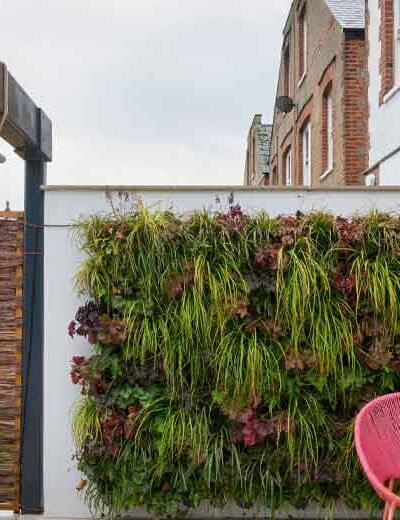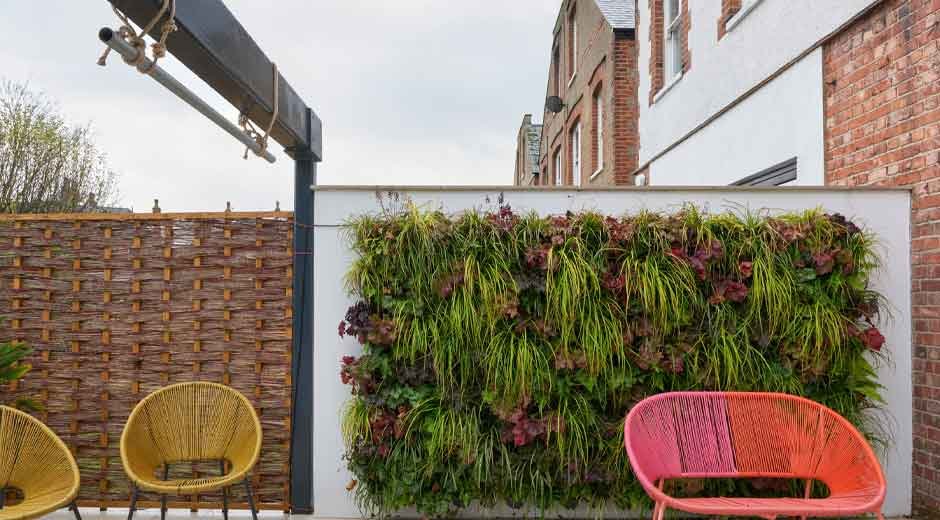Creating a vertical garden can turn even the smallest living areas into lively, green retreats. These gardens don’t just beautify your surroundings. They also help purify the air, improve mood, and bring nature closer to your home.
A vertical garden is perfect for anyone who wants to make the most of limited space while expressing creativity and a love for plants. With careful planning, thoughtful design, and regular care, you can transform a blank wall into a living piece of art that enhances both your indoor and outdoor spaces. Dive in to discover how this can benefit you.
What Is a Vertical Garden?
A vertical garden is a unique style of gardening where plants grow upward rather than outward. Instead of spreading across the ground, they are supported by walls, trellises, or frames that allow them to climb and flourish vertically. This technique is ideal for apartments, balconies, patios, or small courtyards where floor space is limited.
You can design one as simple or as elaborate as you wish, from hanging planters on a balcony to large living walls that transform entire spaces. Beyond their visual appeal, vertical gardens bring nature into urban environments and help people reconnect with greenery, even in bustling cities.
Why Vertical Gardens Are So Beneficial
The benefits of vertical gardens go far beyond their beauty. They help clean the air by absorbing pollutants and releasing oxygen. This makes your home environment healthier and more refreshing.
Greenery also acts as a natural air conditioner, cooling the air during warm months and adding insulation during colder seasons. Vertical gardens can also reduce stress and improve mental well-being. Being surrounded by plants lowers anxiety and enhances concentration.
If you live in a noisy area, plants can even help absorb sound, creating a more peaceful atmosphere. Moreover, these gardens are an excellent way to grow herbs, vegetables, or flowers, giving you fresh produce and a stronger connection to nature.
Finding the Perfect Location
Location is one of the most important factors in building a successful vertical garden. Start by observing different areas around your home to determine which spots receive the right amount of sunlight. A south-facing wall is ideal for plants that love full sun, while shaded areas are best for ferns, ivy, or mosses.
It’s also important to consider wind and rain exposure. A sheltered area protects delicate plants from strong gusts, while easy access to water makes maintenance simpler.
For indoor vertical gardens, choose a wall near a window where natural light can reach. If natural light is limited, grow lights can be added to help plants thrive.
Understanding Light and Plant Needs
Light plays a vital role in the growth and health of your plants. Before you start planting, spend a few days observing how sunlight moves across the chosen wall or structure. Some areas might get bright sunlight for most of the day, while others may be shaded.
Once you know your lighting conditions, match them with the right plant types. For sunny spaces, choose plants that can handle bright, direct light, such as succulents, rosemary, or lavender. In shaded areas, go for plants like ferns, pothos, or philodendrons.
Mixing both sun-loving and shade-tolerant plants can create depth and variety if your space offers a balance of light and shade throughout the day.
Choosing Plants for Your Vertical Garden
Selecting the right plants is one of the most enjoyable parts of creating a vertical garden. Herbs are a favorite choice because they’re useful, fragrant, and easy to grow. Basil, mint, parsley, and thyme are great for culinary use and look beautiful when grouped together.
If you prefer colorful flowers, try petunias, begonias, or nasturtiums to add vibrant hues. For greenery, ferns and ivy offer a lush, full look, while climbing plants like jasmine or dipladenia can create dramatic cascades. Consider how the plants will grow and interact over time.
Combining various textures and colors makes your garden visually engaging and balanced. Group those with similar light and water needs. This makes care simpler and prevents one type from overpowering another.
Over time, you’ll learn how different plants behave and can adjust your design for even better results.
Designing and Structuring Your Garden
Designing a vertical garden is where creativity truly comes alive. You can build your structure from ready-made wall systems or create your own using materials like pallets, trellises, or wire frames.
Wooden pallets add a rustic touch, while metal grids create a modern, sleek appearance. Incorporating garden plant stands from Lesera can help you elevate and organize your greenery beautifully.
When designing your layout, think about layering. Place taller or trailing plants at the top and smaller, compact ones below. This allows light to reach every leaf and creates a visually appealing gradient.
Mixing different shades of green with touches of color gives your garden depth and charm. You can also add small decorative elements like garden signs or tiny sculptures to personalize the space further.
Watering, Feeding, and Maintenance
Vertical gardens need consistent care to stay healthy. Because they’re more exposed to air and sunlight, they often dry out faster than traditional gardens.
Check soil moisture often and water when the top layer feels dry. Setting up a drip irrigation system or using self-watering planters can make this process easier and save time.
Fertilizing regularly keeps plants vibrant. A liquid fertilizer every few weeks during the growing season helps maintain nutrients. Be mindful of each plant’s needs-some require more feeding, while others thrive with minimal care.
Pest control is another key part of maintenance. Inspect leaves often for signs of damage or pests. If you notice issues, try natural remedies like neem oil or gentle soap sprays instead of harsh chemicals.
These methods keep your plants safe and environmentally friendly.
A Green Oasis, Right at Home
A vertical garden is more than a decorative feature. It’s a lifestyle choice that celebrates creativity, sustainability, and a love for nature. With the right design, thoughtful plant selection, and regular care, your living wall will become a source of pride and relaxation.
Begin your vertical garden journey today and discover how a few plants can transform your space into a lush, living masterpiece. Expand your knowledge and check out more posts on our blog!






Leave a Reply